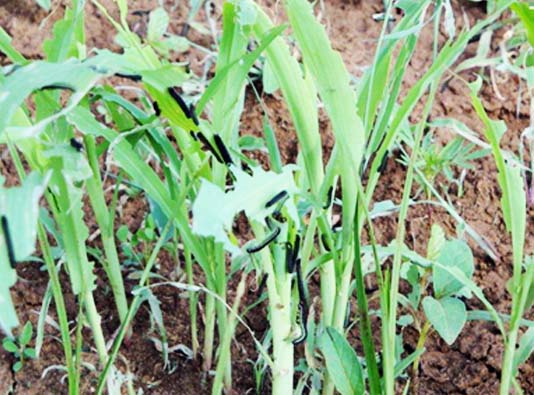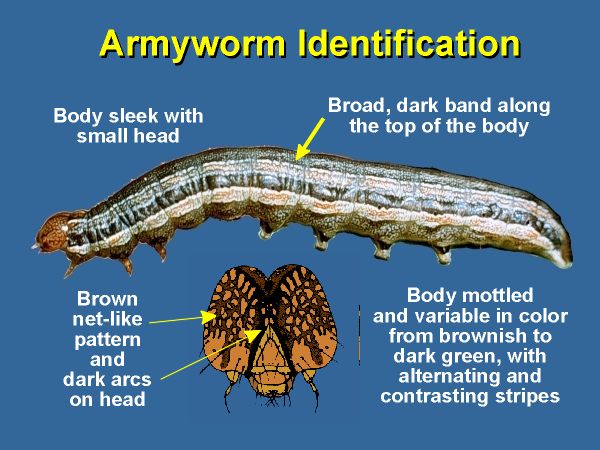The African Armyworm
The African Armyworm, Spodoptera Exempta (Walker) (Lepidoptera: Noctuidae), is the larva or caterpillar of a night-flying moth which causes considerable damage to cereal crops, namely maize, millet, sorghum, rice, wheat, teff and barley as well as to sugarcane seedlings and pasture grasses. Cereal crops are important staple food crops in Eastern Africa and any loss caused to these staple crops is a serious threat to food security and economic well-being, particularly to resource-poor farmers.
A heavy infestation of armyworm caterpillars appears to march across pastureland or freshly sprouting cereal seedlings devouring everything in its path, and gives the pest its name.
Armyworm have been known to subsistence farmers in Africa probably for as long as cultivation has occurred, with the result that it has its own name in local languages: viwavi jeshi, ng’urrto, keenyu, ngonga, kungu, mbilizi, omor, n’kungu la (Kenya, Tanzania, Uganda), temch, geiry, barnosay (Ethiopia, Eritrea), dirta afrikaanka (Somalia), and el-dudah, el-zahfa, el-afrigia (Sudan).
The life cycle of the armyworm is similar to that of other moths and butterflies (Lepidoptera). The whole life cycle takes about one month under normal outbreak conditions, but this period may vary depending on temperature, humidity, larval density, type and quality of food, sex and the effects of parasitism.
The first armyworm outbreak season in eastern Africa usually starts in Tanzania in November/December and then the moths move with the Inter Tropical Convergence Zone(ITCZ) towards the north, first to Kenya and then to Ethiopia, Eritrea and even cross the Red Sea to Yemen.
The moths also move southwards to Malawi, Mozambique, Zambia and South Africa. Monitoring the movement of armyworm moths is important to predict the areas where outbreaks can occur.
Symptoms of African Armyworm
The symptom of African Armyworm attack is gross feeding damage to foliage, growing points and young stems. Young caterpillars scrape out the tissue of one side of the leaves creating a ‘window’ effect; leaves may dry up and assume a scorched appearance. Older caterpillars feed on leaves starting at the margins and moving inwards, leaving the leaves with a ragged appearance.
They may eat whole leaves leaving only the midrib. Severe infestation results in total defoliation or destruction of the plant to ground level. Older caterpillars drop to the ground if disturbed. With large populations the ground may be literally covered with the gregarious band of caterpillars.
Host Ranges Affected By African Armyworm
The plants attacked are mainly cereals, grasses and sedges (Poaceae and Cyperaceae families). Major economically important hosts are: barley, pearl millet, African millet, maize, oat, rice, sorghum, sugarcane, teff, wheat and pasture grasses, especially Cynodon and Pennisetum species.
Sorghum bicolor (sorghum), Saccharum officinarum (sugarcane), Panicum miliaceum (millet), Oryza sativa (rice), Eragrostis tef (teff), Zea mays (maize), Hordeum vulgare (barley), Avena sativa (oats), Triticum spp. (wheat) and Zingiber officinale (ginger).
Palmae (plants of the palm family), Rosaceae, Cyperus (flatsedge).
Eleusine coracana (Koracan), Poaceae (grasses), Cyperaceae (Sedges), Cynodon dactylon (Bermuda grass), Panicum maximum (Guinea grass), Pennisetum clandestinum (Kikuyu grass), Cynodon spp. (Quickgrass) and Pennisetum glaucum (Pearl millet).





